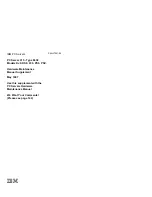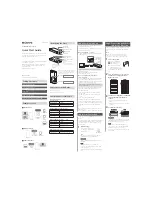
40
TERMINAL SERVERS
4.2.4 N
AMING
C
ONVENTIONS FOR
T
ERMINAL
S
ERVER AND FOR
LAT S
ERVICES
Some commands require you to enter a name, whether it is that of the
Terminal Server itself or a node, port, or service. All variable names must
consist of a string of between 1 and 16 characters and cannot be abbreviated.
The allowable characters are from A to Z, 0 to 9, $, - (hyphen), _
(underscore), and the . (period). The Terminal Server is not case-sensitive.
Terminal Server names must be unique to a local area network (LAN)
and port names must be unique within the Terminal Server itself. LAT service
names must be unique for each service on the LAN, but one service may be
offered by multiple service nodes.
These naming conventions do not apply to user names, Terminal Server
names or service identification messages.
4.2.5 C
OMMAND
R
EQUIREMENTS AND
R
ESTRICTIONS
You can enter the Terminal Server commands in either uppercase or
lowercase characters, or a combination of both since the Terminal Server
is not case-sensitive. The words in a command line must be separated by one
or more spaces.
Command lines can contain up to 132 characters. You can continue a
command line onto a second terminal display line provided you do not press
the <Return> key at the end of the first display line. In local mode, there is no
such type-ahead facility.
You can interrupt current local mode output by pressing the <Break> key
or by entering your local switch character (discussed later). When a command
fails to execute, you get an error message. If you make an error in a command
line, the Terminal Server rejects the entire command line. If you get an error
message, check the command syntax and re-enter all or part of the command
as required. When a command has executed successfully, the Terminal Server
will display the local mode prompt.
Summary of Contents for LE2101A-BT-R2
Page 2: ......
















































